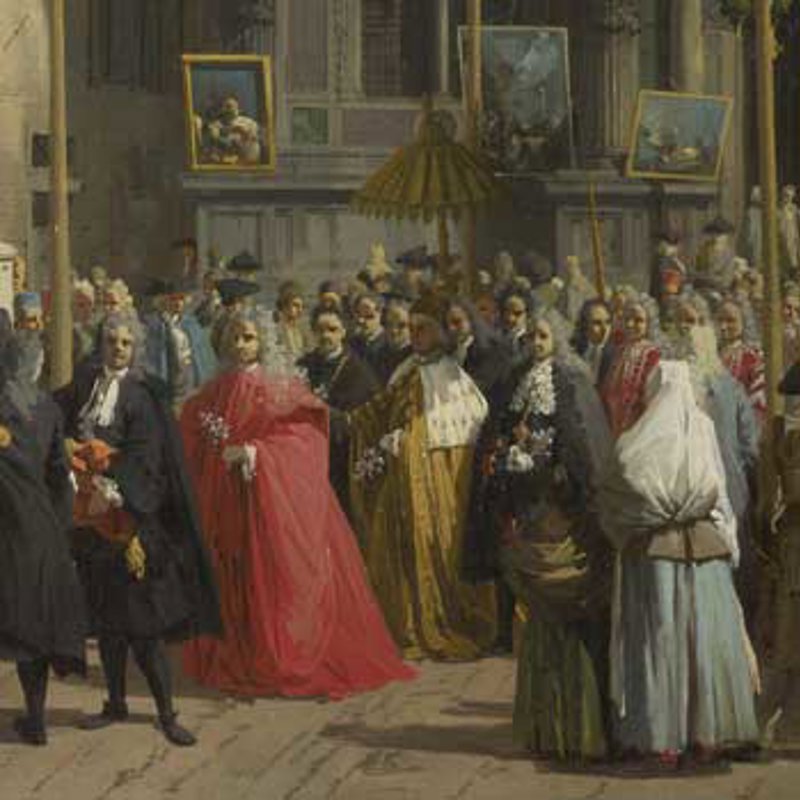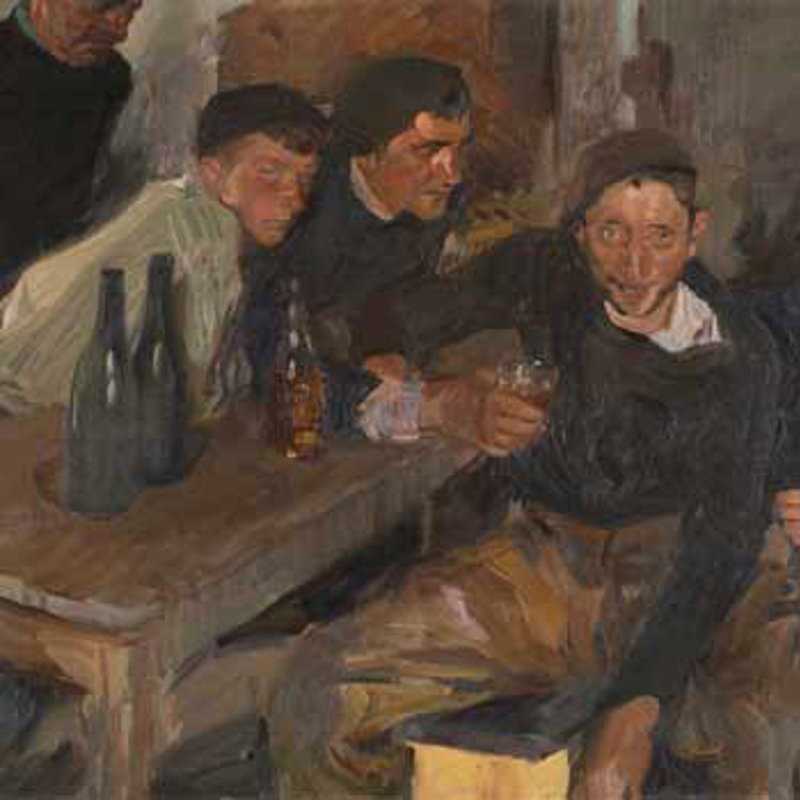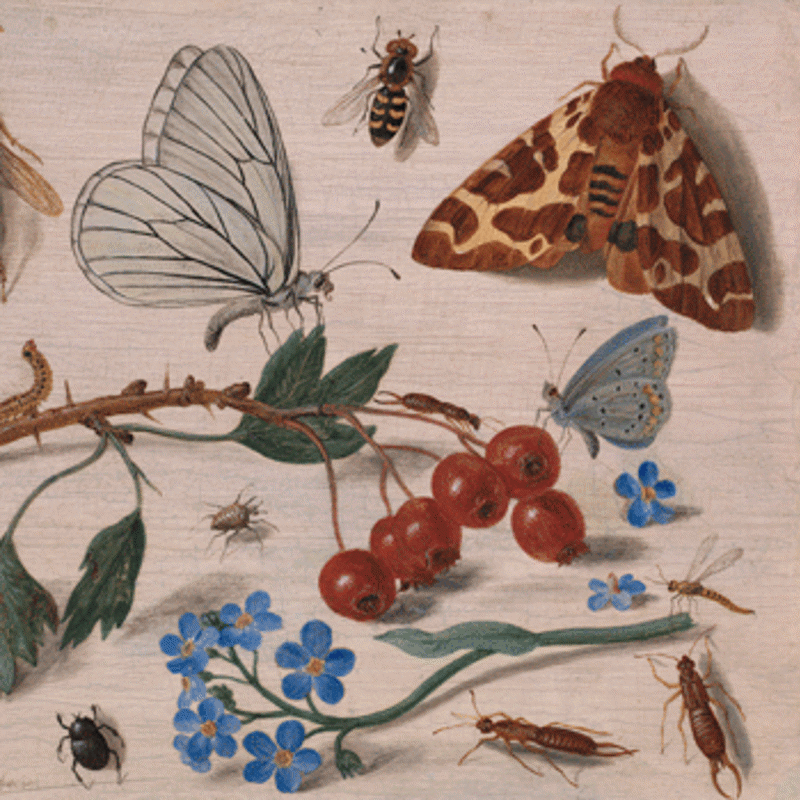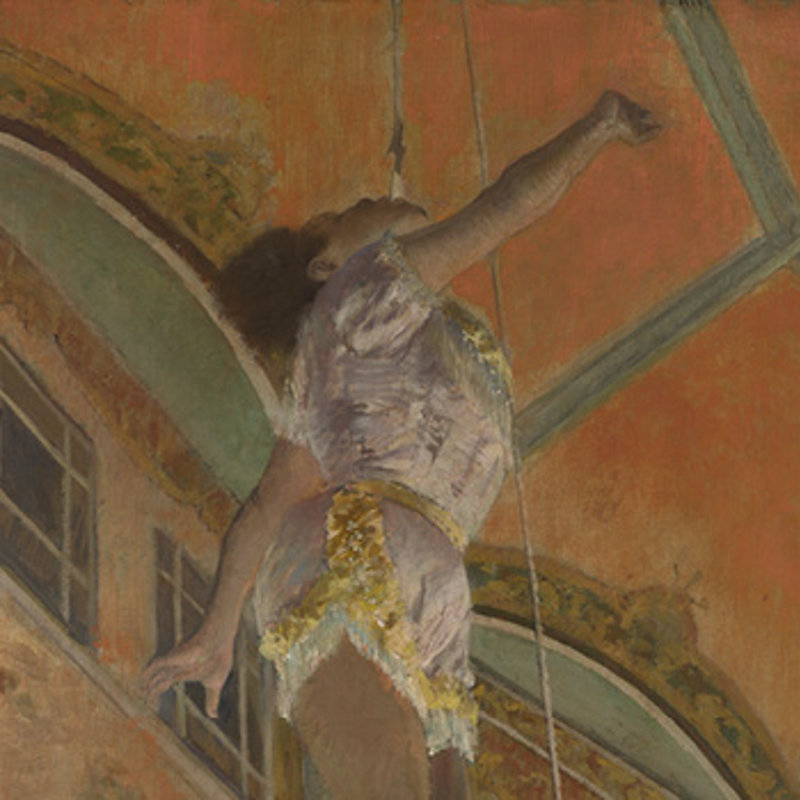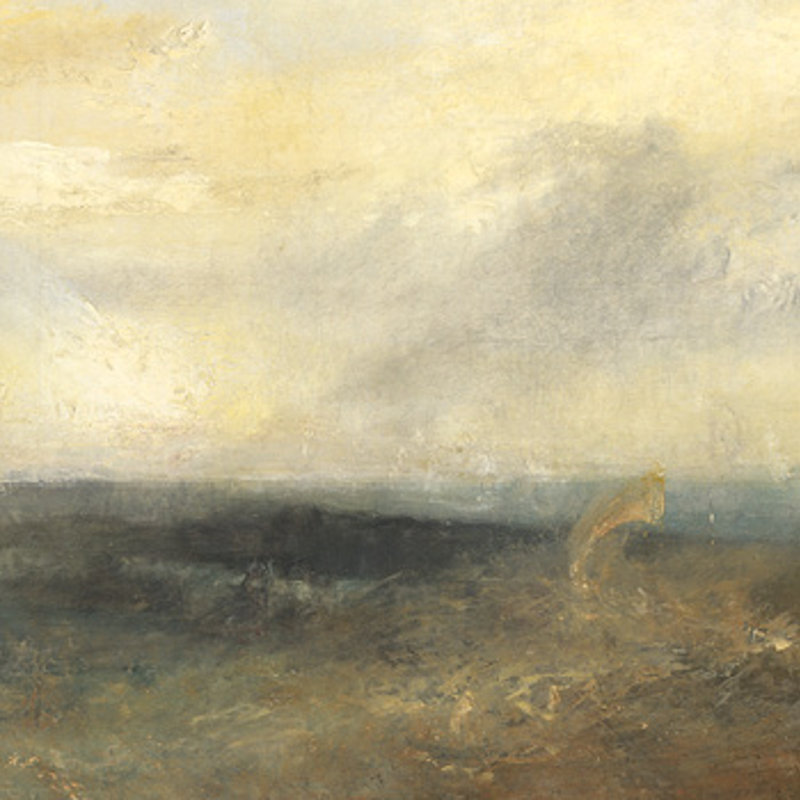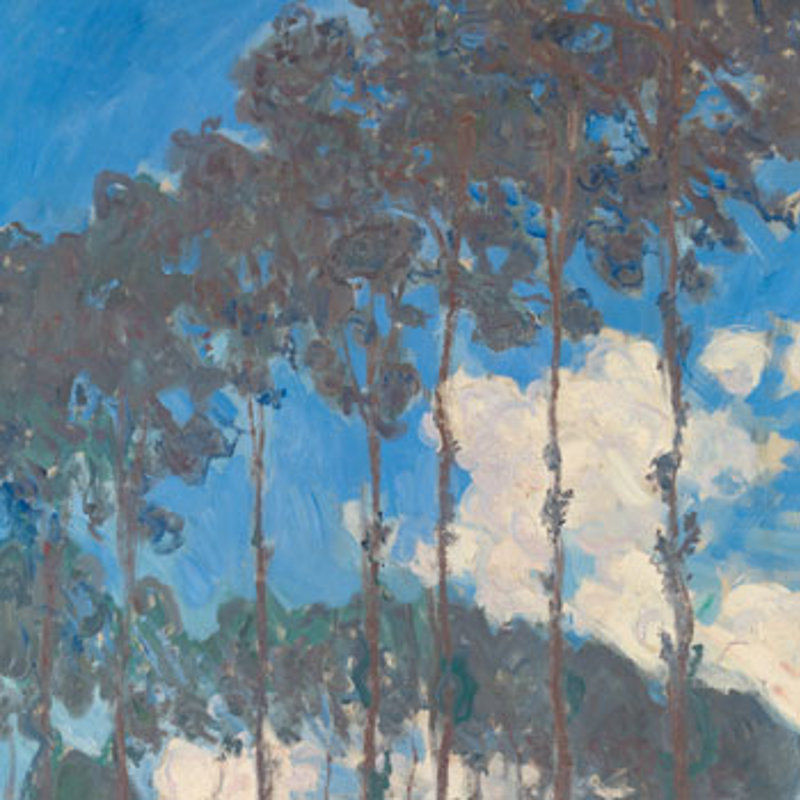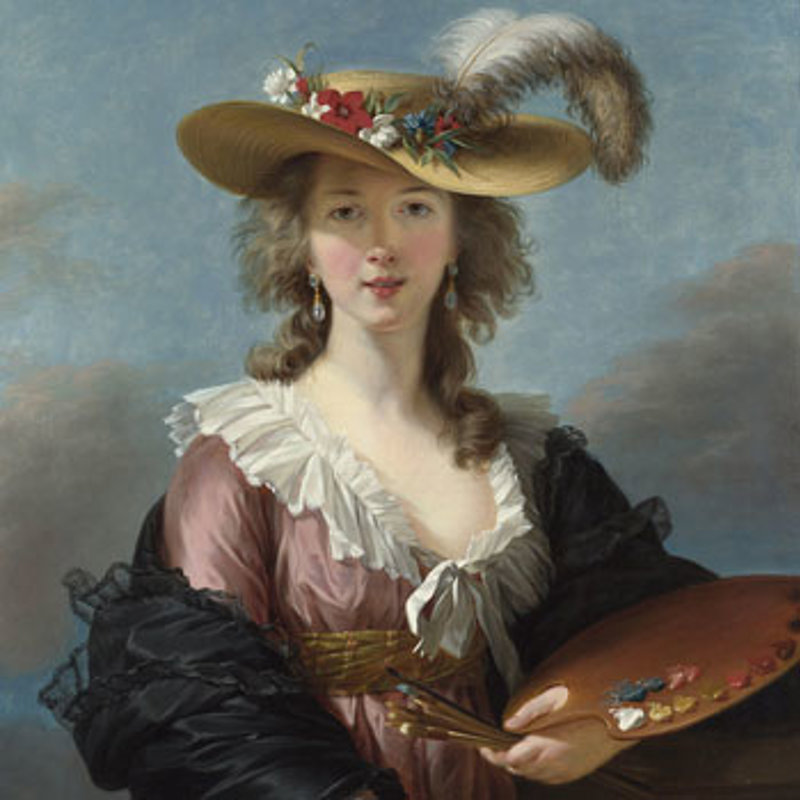Long, thin shadows thrown by trees suggest late afternoon in this sunlit scene, its tranquillity inviting slow looking and quiet contemplation.
At the centre of the painting, Camille Pissarro’s wife, Julie Vellay, stands in a meadow, hand on hip, carrying a basket. Her skirt provides an anchor for our eyes, hooking our attention.
From there, we follow the length of her shadow, and the shadows that radiate from the young saplings, carrying our gaze to the corner of the painting. With our attention focused on lines, we now take in the vertical trunks of these young trees, in their protective cages, in the middle ground, and the intersecting horizontal lines of what appears to be the edge of the meadow, and a path across an adjacent field. Finally, we take in the distant silver birches and the towering poplar that edge a meandering stream.
The painting seems to radiate light. Cream, yellow and blue brushstrokes in the densely painted sky suggest the shimmering light of the late afternoon.
In 1885, Pissarro had met and fallen under the spell of Georges Seurat, adopting his Pointillist innovation of applying small dots of pure colour to create richly luminous effects.
Here, Pissarro enlivens the green grass with touches of pink and yellow. The shadowed areas are flecked with blue, mauve and the odd touch of orange. While the technique was new and exciting in 1885, it nevertheless relies on the old laws of aerial perspective. The saplings are flecked with orange and yellow – warm colours that appear to come towards us – while the distant trees are predominantly evoked by dabs of cool blue and violet that give the illusion of receding away from us.
Standing back from Pissarro’s painting, we can suspend reality and lose ourselves in the picture. The colours blend in the eye and the forms become clear. Up close, however, we are confronted by the materiality of paint and the artifice of painting, as we see nothing but dots of vivid colour. Viewed from afar we clearly see the posture of Pissarro’s wife. Yet zoom in and her face is nothing but an orange blob, with quick blue markings roughly demarcating her eyebrows, eyes, mouth and nose.
This picture is one of a series of this idyllic countryside, painted by Pissarro from his home in the Normandy village of Eragny. He painted the series throughout the 1880s and 1890s, year after year, almost season by season.
Though best known for his rapid, sketchy Impressionist paintings, Pissarro’s experiments with the minute precision of Pointillism had a strong influence on all four of the major Post-Impressionists: Seurat, Cézanne, Van Gogh and Gauguin. Nevertheless, he eventually abandoned the painstaking Pointillist technique, in favour of swift and spontaneous impressions.
With thanks to Nikon, Digital Content Partner




